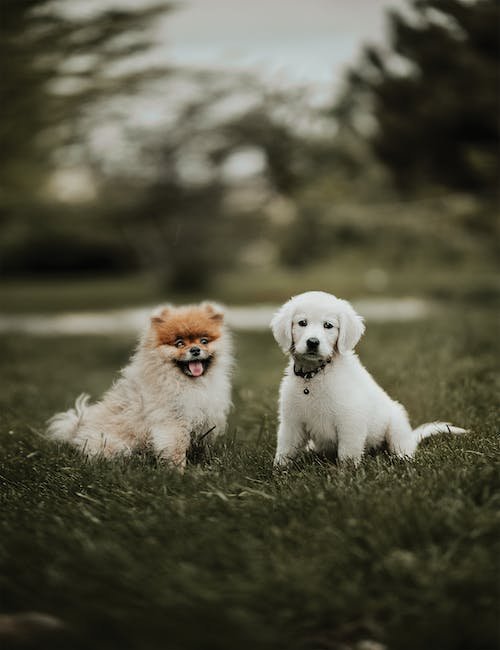In a world full of open roads, adventure-filled getaways, and the promise of exploring new horizons, there’s one tiny hitch that can cast a shadow of doubt on our travel plans: a fearful, trembling pup who fears the very idea of car rides. But fear not, fellow wanderers, for this article unveils the secrets to transforming your anxious fur baby into a confident, road trip-ready companion. Join us on a journey of training, patience, and understanding as we unlock the key to conquering your pup’s fear of car rides, making every road trip a tail-wagging success.
Table of Contents
- Understanding the Root Causes of Canine Anxiety in Car Rides
- Establishing Positive Associations: Gradual Exposure and Desensitization Techniques
- Effective Strategies for Calming Vocalization and Restlessness during Car Rides
- Building Trust and Confidence: Reward-based Training Methods for Fearful Puppies
- Creating a Safe and Comfortable Travel Environment: Practical Tips and Essential Accessories
- Q&A
- The Conclusion

Understanding the Root Causes of Canine Anxiety in Car Rides
Canine anxiety in car rides can be a distressing experience for both dogs and their owners. It is important to understand the root causes of this anxiety in order to address and alleviate it effectively. There are several factors that can contribute to a dog’s unease during car rides.
1. Previous negative experiences: Dogs can develop anxiety due to past traumatic experiences in the car. This could include incidents such as accidents, sudden stops, or even a lack of proper restraint that led to injury. These negative associations can be deeply ingrained in a dog’s memory, causing fear and anxiety when it comes to car rides.
2. Motion sickness: Just like humans, dogs can also suffer from motion sickness. The constant movement and changes in speed and direction can cause nausea and discomfort. Dogs may exhibit signs of anxiety like drooling, excessive panting, or vomiting when they experience motion sickness during car rides.
3. Lack of socialization and exposure: Dogs that have not been properly socialized or exposed to car rides during their critical developmental stages may develop anxiety later in life. The unfamiliar sights, sounds, and sensations of a moving car can be overwhelming for such dogs. It is crucial to introduce puppies to car rides gradually and positively to prevent anxiety in the future.
Understanding these root causes of canine anxiety in car rides can help pet owners address the issue effectively. By providing positive experiences, using proper restraint systems, and gradually desensitizing dogs to the car environment, it is possible to alleviate their anxiety and make car rides a more pleasant experience for both dogs and their humans.
Establishing Positive Associations: Gradual Exposure and Desensitization Techniques
When it comes to overcoming fears or negative associations, gradual exposure and desensitization techniques can be remarkably effective. These methods work by gradually exposing individuals to the feared stimuli in a controlled and safe manner, allowing them to build positive associations over time.
One technique often used is called systematic desensitization, which involves creating a hierarchical list of feared situations and gradually exposing oneself to each item on the list. Whether it’s fear of public speaking or a phobia of spiders, the process involves starting with the least anxiety-provoking situation and gradually working up to the most feared. This method helps individuals become more comfortable and confident as they conquer each step, ultimately leading to a positive association with what was once feared.
Alongside gradual exposure, another effective technique is counterconditioning. By pairing the feared stimulus with something pleasant or positive, individuals can rewire their associations. Positive reinforcements, such as rewards or affirmation, can enhance the process, slowly replacing negative feelings with positive ones. Through repetition and gradually increasing the exposure to the feared stimulus, individuals can learn to see it in a new light and establish a positive connection where fear once dominated.
- Gradual exposure and desensitization techniques involve exposing individuals to feared stimuli in a controlled manner.
- Systematic desensitization follows a hierarchical approach, starting from the least anxiety-provoking situation and gradually moving towards the most feared.
- Counterconditioning involves pairing the feared stimulus with something positive to rewire associations.
- Positive reinforcements and repetition aid in establishing positive connections where fear once resided.

Effective Strategies for Calming Vocalization and Restlessness during Car Rides
When it comes to car rides, some pets can become quite vocal and restless, making the experience stressful for both them and their owners. However, with the right strategies, you can help calm your furry friend and make car rides a more enjoyable experience for everyone involved.
Here are some effective techniques to reduce vocalization and restlessness during car rides:
- Create a comfortable environment: Make sure your pet feels safe and secure in the car by using a harness, crate, or pet seat belt. Providing familiar bedding and toys will also help create a sense of familiarity and comfort.
- Gradual exposure: If your pet is particularly anxious about car rides, start by taking short trips around the block and gradually increase the duration. This will help them become accustomed to the motion and sounds of the car.
- Establish a soothing routine: Develop a calming routine before and during car rides. This may include playing relaxing music, using pheromone sprays or essential oils designed to calm pets, or giving them a favorite treat or toy to distract and comfort them.
- Positive reinforcement: Reward your pet with treats, praise, or their favorite toy for exhibiting calm behavior during car rides. This will reinforce positive associations with the car and encourage them to remain relaxed.
- Consult a professional: If your pet’s vocalization and restlessness persist despite your efforts, it might be helpful to consult with a veterinarian or animal behaviorist who can provide specialized advice and guidance based on your pet’s individual needs.
By implementing these effective strategies, you can create a more peaceful and enjoyable car ride experience for both you and your furry companion. Remember, patience and consistency are key, and with time, your pet will learn to feel more relaxed and at ease during car journeys.

Building Trust and Confidence: Reward-based Training Methods for Fearful Puppies
When it comes to training a fearful puppy, the key is to build trust and confidence through reward-based training methods. These methods focus on positive reinforcement and creating a safe and nurturing environment for the puppy to thrive in.
One effective approach is to use treats as a reward when the puppy displays desired behaviors. This not only motivates the puppy to learn but also creates a positive association with the training sessions. Incorporating clicker training can also be beneficial, as it helps the puppy associate the sound with a reward, further reinforcing their confidence.
In addition to treats and clicker training, it’s important to create a predictable routine for the puppy. This routine provides a sense of security and helps the puppy feel more at ease. Consistency is key, as it helps the puppy understand what is expected of them and reduces their anxiety.
It’s crucial to take things at the puppy’s pace and never force them into situations that make them uncomfortable. Patience and understanding are essential, as fearful puppies require gentle guidance and reassurance. By using reward-based training methods, we can help these puppies overcome their fears, build trust, and develop into confident, well-adjusted adult dogs.
Creating a Safe and Comfortable Travel Environment: Practical Tips and Essential Accessories
Ensuring a safe and comfortable travel environment is crucial, whether you are planning a short trip or embarking on a long journey. By taking practical precautions and utilizing essential accessories, you can greatly enhance your travel experience. Here are some useful tips and must-haves to make your travels worry-free:
- Pack a universal travel adapter: One of the most crucial accessories for any traveler is a universal travel adapter. This versatile device allows you to charge your electronic devices in any country, eliminating the stress of finding the right plug adapter.
- Invest in a reliable luggage lock: Protect your belongings with a sturdy and reliable luggage lock. This small investment can provide peace of mind while you explore new destinations. Look for locks that are TSA-approved, ensuring that airport security can easily inspect your luggage without causing damage.
- Carry a portable phone charger: In today’s interconnected world, staying connected is essential. A portable phone charger is a handy accessory that ensures you never run out of battery on your smartphone or other electronic devices. Look for a compact and lightweight option that fits easily in your bag.
- Don’t forget a neck pillow: Comfort is key when traveling, particularly during long flights or bus rides. A neck pillow offers much-needed support and helps prevent neck strain or discomfort. Look for one made with memory foam for added comfort.
By following these practical tips and investing in essential accessories, you can create a safe and comfortable travel environment. Remember to plan ahead, pack smart, and prioritize your comfort to make the most out of your journey.
Q&A
Q: How can I help my puppy overcome their fear of car rides?
A: Start by introducing your puppy to the car in a positive way, such as placing treats or toys near the vehicle. Gradually increase exposure to car rides, rewarding your puppy for calm behavior and creating a comfortable environment inside the car.
Q: What can I do if my puppy gets anxious or scared during car rides?
A: Try playing calming music or using pheromone sprays to create a soothing atmosphere. Additionally, consider using a travel crate or a safety harness to help your puppy feel more secure while traveling.
Q: Are there any specific training methods to combat fear of car rides?
A: Desensitization and counterconditioning can be effective techniques. Gradually expose your puppy to car rides in short sessions, pairing the experience with positive reinforcement like treats or praise.
Q: Should I force my puppy into the car if they’re scared?
A: No, forcing your puppy into the car may worsen their fear and create a negative association. It’s better to take a patient approach, using positive reinforcement and gradually building their confidence at their own pace.
Q: Are there any natural remedies or supplements to calm my puppy’s nerves?
A: Some natural remedies, such as lavender or chamomile essential oils, can have a calming effect on puppies. However, it’s important to consult with your veterinarian before using any supplements or remedies.
Q: Can professional help be beneficial for puppies with a fear of car rides?
A: Absolutely. Consulting with a professional dog trainer or behaviorist can provide valuable guidance tailored to your puppy’s specific needs. They can offer expert advice and develop a customized training plan.
Q: Are there any safety precautions I should take when traveling with a fearful puppy?
A: Ensure your puppy is securely restrained in a crate or with a harness to prevent any accidents or injuries during the journey. Additionally, keep the car well-ventilated and make frequent stops to offer bathroom breaks and reassurance.
Q: Will my puppy eventually outgrow their fear of car rides?
A: With proper training, socialization, and consistent exposure, many puppies can overcome their fear of car rides. However, it’s important to remember that each puppy is unique, and some may require more time and patience than others.
The Conclusion
And there you have it, the ultimate guide to transforming your fearful pup into a confident, road trip-ready adventurer! We hope this article has enlightened you on the various techniques and strategies to address your pup’s fear of car rides.
Remember, patience is key when it comes to training your furry companion. With a consistent routine and positive reinforcement, you’ll witness remarkable progress as your pup conquers their fear, one car ride at a time.
While each pup is different and progress may vary, it’s essential to tailor your approach to suit their individual needs. Celebrate even the smallest victories, as they are stepping stones towards a lifetime of enjoyable road trips.
Always remember to create a safe and secure environment for your pup during car rides. Whether it’s through crate training, using a seatbelt harness, or providing them with a cozy blanket, ensuring their comfort will significantly contribute to their journey towards fear-free road trips.
As your pup blossoms into a confident traveler, embrace the opportunity to create unforgettable memories together. From exploring breathtaking landscapes to discovering hidden gems, the world is now your oyster to explore alongside your newly road trip-ready pup.
So buckle up, hit the road, and embark on a thrilling adventure with your furry friend. With determination, understanding, and lots of treats, you’ll soon realize that the fear of car rides is a distant memory, replaced by the joy and excitement of new experiences together. Happy trails!
As an affiliate, my content may feature links to products I personally use and recommend. By taking action, like subscribing or making a purchase, you’ll be supporting my work and fueling my taco cravings at the same time. Win-win, right?
Want to read more? Check out our Affiliate Disclosure page.